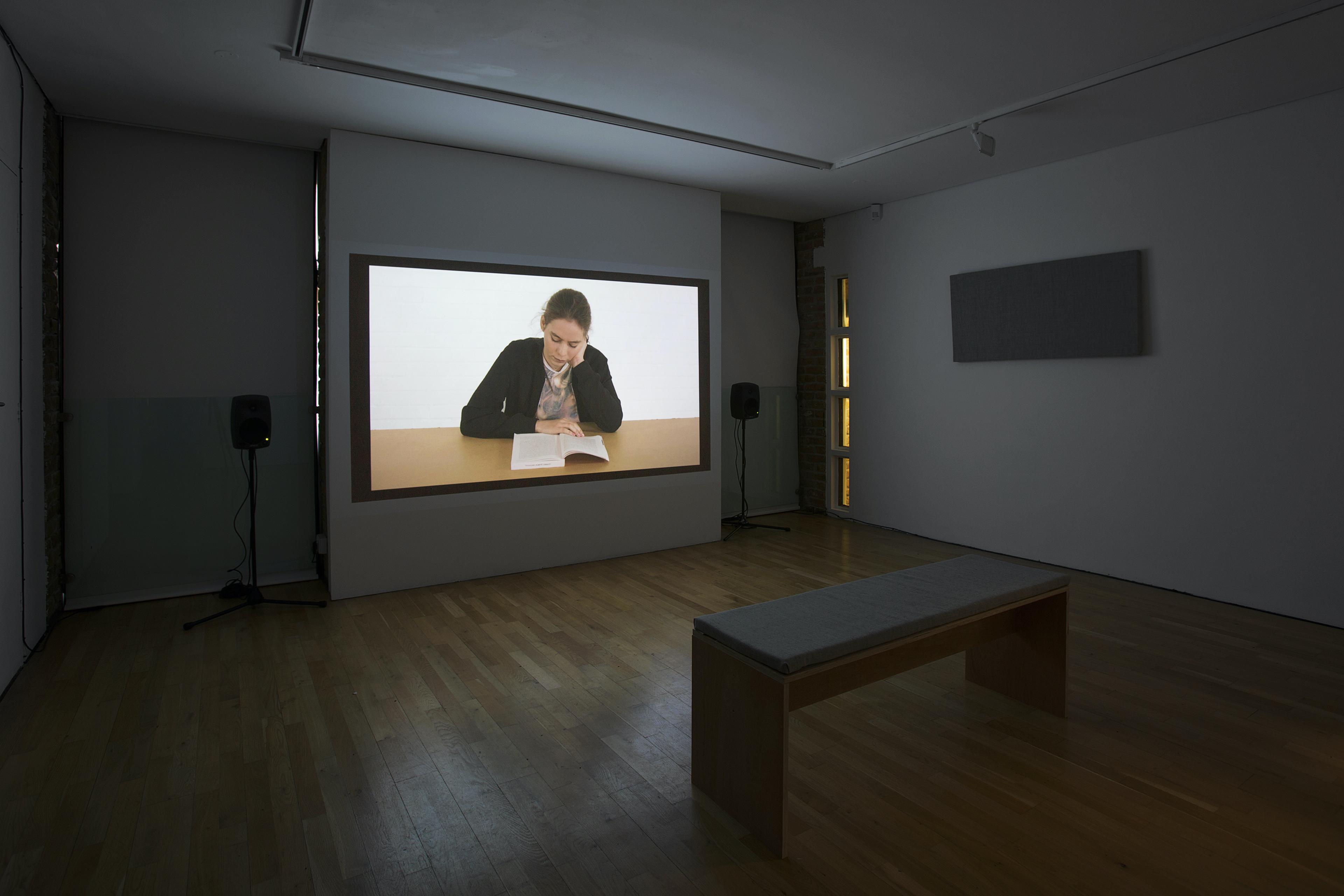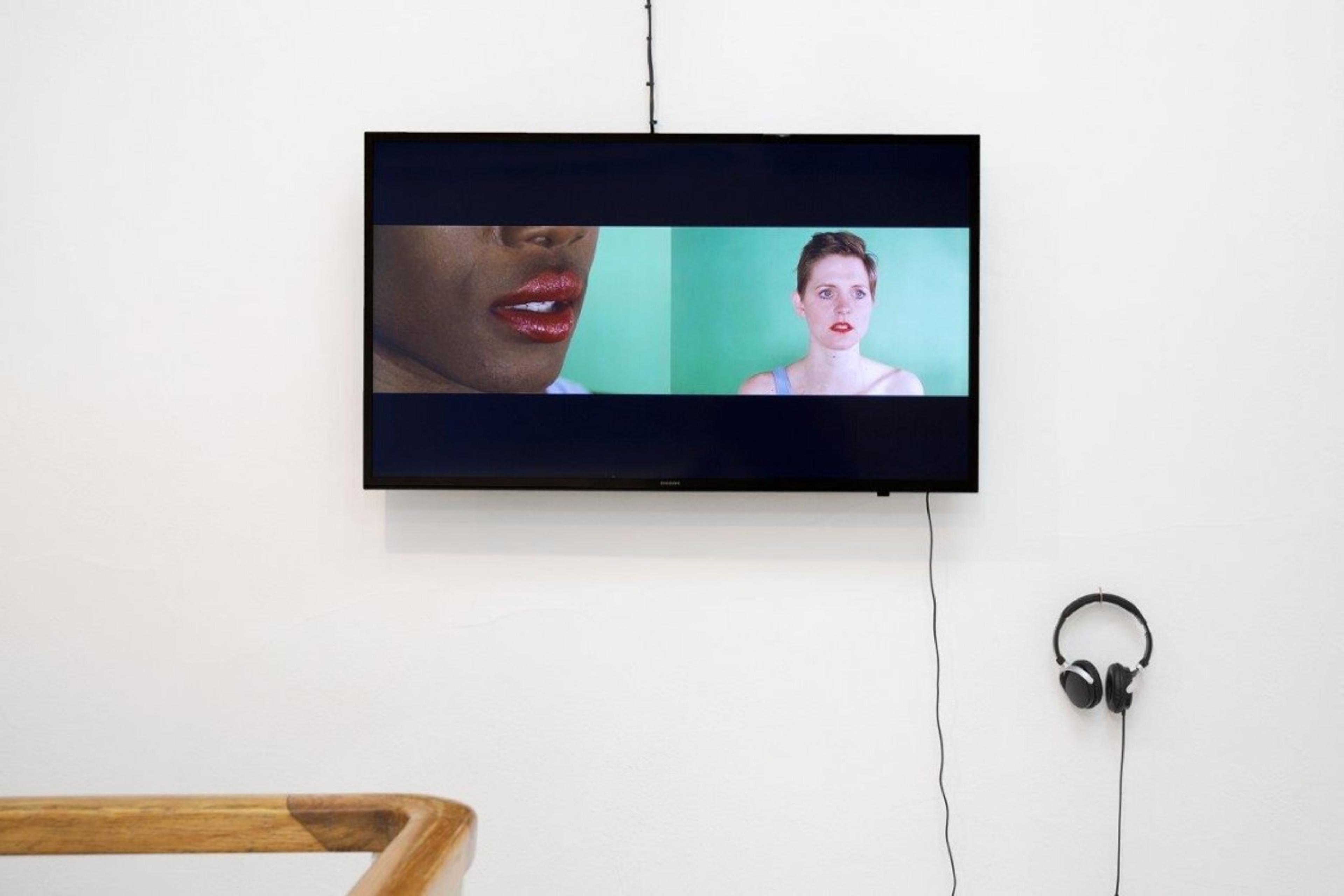Labour's Own Sounding Ideal , 2019

Labour’s Own Sounding Ideal is the first institutional solo exhibition by London based visual artist Anneke Kampman. Working with text, music and moving image, Kampman examines the ways the culture industry produces ‘personality’ for purposes of profit. Labour’s Own Sounding Ideal presents Kampman’s ongoing research, investigating the social and artistic functions of the music video form.
Across the exhibition, works trace the historical development of the music video, from the birth of MTV in 1981 to its present-day YouTube ubiquity. This now pervasive form is used as a framework to consider broader concerns with standardisation, artistic autonomy, and political economy.
On the ground floor, Kampman presents www.laboursownsoundingideal.com,a video recording of an anonymous user engaging with a schematic of a fictional website. The website consists of forty-three video clips organised in response to thirteen historical events, dating from 1971 to the present. Documenting the music video’s development across shifting political, technological, and economic conditions, the web-archive contains extracts from a range of media sources – including music videos, artists’ video works and television broadcasts – that are accompanied by twelve short stories.
Each story seeks to establish connections between a historical event, and it’s cast characters. From the adolescent figure depicted in Kenneth Anger’s short film Scorpio Rising (1963) to the contemporary female subject exemplified by Beyonce’s Formation (2016), the extracts trace the emergence of differing subjectivities across historical time. The effects of changes to the global political economy – from the dropping gold standard in 1971 to the financial crisis of 2008 – echo within each extract’s frame. Just as the contemporary landscape is reshaped and remade daily by fluctuations in the flow of money and goods, so too is the artwork shaped by the relations it travels through.
Inhabiting the contradictory status of the ‘pop-promo’ – representing both artwork and advert – Kampman’s video work Sleeping Lions (2019) on the first floor brings together two short scenes. In the first, a teenage girl reads a poetic text, confronting ideas of capture, coercion, and game playing; in the second, she is seen rehearsing to fragments of Rihanna’s We Found Love in a Hopeless Place (2011). Singing along to a mechanically produced version of Rihanna’s voice, the teenager’s vocals mimetically reproduce both human and machine-like qualities.
The work emphasises the contradictions of commodification. The performer is seen wearing a t-shirt associated with a 2012 court-case, in which Rihanna sued Topshop for ‘unlawful’ use of her image; she also wears a t-shirt featuring artwork by the See Red Woman’s Workshop from 1978. The ongoing tension between the so-called freedom of infinite possibilities available in adolescence and the rule-based operations of adult life under capital are performed throughout the work.
Working with artists from Common Study, an artist-led group concerned with critique, pedagogy and artistic autonomy, the second floor is conceived as an open studio; playing host to a series of working-group meetings as well as performances and events by artist-led record label and publisher, Oh, and Common Study.
Initiated by Common Study member T J Watson and undertaken by the group, Culture Industry: A Reading takes the form of a table-top installation produced through three collaborative workshops. Meeting on Friday 25 February, 1 and 8 March, the working-group meetings depart from Adorno and Horkheimer’s original text, The Culture Industry, mediating its insights with recent media developments. Using found imagery, the work ‘maps’ the culture industry, producing diagrammatic arrangements on the tables installed.
The present members of Common Study are Mike Brooks, Lisa Busby, Katie Hare, Louis-Jack, Anneke Kampman, Theo Leanse, Sam Mercer, Hugh Nicholson, Jo Sweeney, and T J Watson.
On the top floor, consisting of video material split across two timelines and a single audio track, Dead. Air. Management. (2018) addresses issues of standardisation, repetition and appropriation in the music video. Existing somewhere between video-essay and performance, Dead. Air. Management. incorporates three lip-synched performances and a single offscreen narrator, alongside analyses of music videos (featuring Taylor Swift, Lana Del Ray and Shakira). Constrained to repeating the same single ‘confessional’ monologue, the performers appear simultaneously life-like yet inanimate, ruminating on the nature of choice in various contexts. The performers’ lack of agency is contrasted with the fantasy space of the music video, a site in which ‘autonomy’ is synonymous with the commodity form and ‘personality’ is reducible to a brand.
Across the four floors, Labour’s Own Sounding Ideal provides different entry points into the world of the music video, whilst questioning how the reverberations from a changing contemporary landscape are played out in these hybrid examples of art-making and advertising.
Solo exhibition, Pump House Gallery, London.
[23 January – 31 March 2019]

'www.labour'sownsoundingideal.co.uk' (2019)

'Sleeping Lions' (2019)

'Sleeping Lions' (2019)

'The Culture Industry: A Reading' (2019)

'The Culture Industry: A Reading' (2019)

'Dead. Air. Management.' (2018)